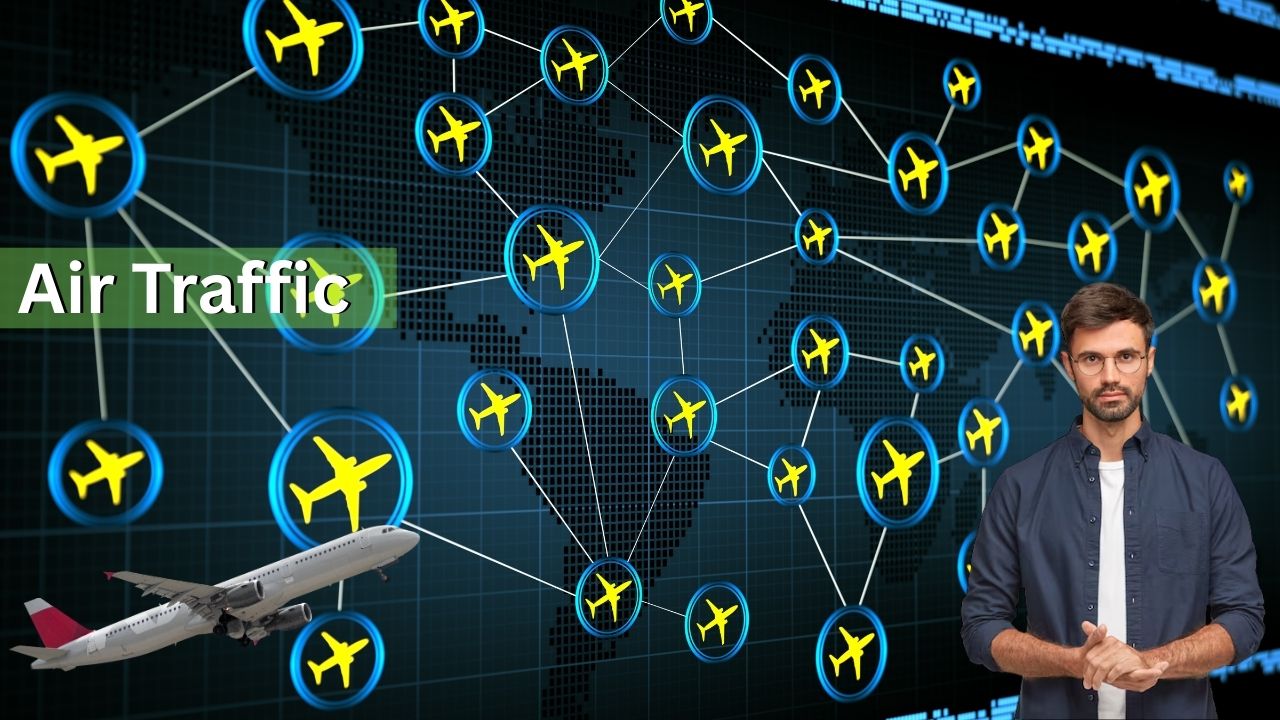Air Traffic
Air traffic is the regulated and coordinated movement of aircraft within controlled airspace and at airports, and it is essential for the safe and efficient flow of global aviation. It encompasses all types of aircraft, including commercial airlines, military jets, cargo planes, and private aircraft, all of which must follow strict procedures and routes set by air traffic control (ATC). ATC services, using radar systems, satellite navigation, radio communication, and computer networks, monitor aircraft in real time to ensure that planes maintain safe distances from one another, avoid collisions, and follow optimized flight paths to minimize delays and fuel consumption.
Global Growth and Technological Challenges
As the number of daily flights increases worldwide due to growing demand for air travel and commerce, airspace is becoming more congested, which presents significant challenges in terms of traffic flow, safety, and environmental impact. Many countries are therefore investing in advanced technologies to modernize their air traffic management systems, introducing innovations like performance-based navigation, automated tracking, and integrated data systems. These improvements aim to reduce delays, lower carbon emissions, and improve the overall passenger experience.
Air Traffic in Pakistan
Within this global framework, Pakistan holds a critical position in international aviation due to its geographic location at the crossroads of South Asia, Central Asia, the Middle East, and Europe. This makes Pakistan’s airspace a major transit route for international flights, and managing this traffic requires robust infrastructure and coordination. The Civil Aviation Authority (CAA) of Pakistan is responsible for overseeing and regulating all aspects of civil aviation, including air traffic services. Pakistan’s major international airports—Jinnah International in Karachi, Allama Iqbal in Lahore, and Islamabad International—serve as primary hubs for both domestic and international travel, facilitating the movement of millions of passengers and large volumes of cargo each year.
Modernization and Local Challenges
The country’s ATC infrastructure includes a combination of modern radar systems and legacy equipment, with ongoing initiatives to upgrade communication networks, enhance surveillance capabilities, and train personnel to meet international standards. However, Pakistan faces unique challenges, such as restricted airspace due to security concerns, limited regional coordination in South Asia, and the need for continued investment in technology and human resources. Despite these obstacles, Pakistan is steadily progressing in its efforts to modernize its aviation sector, recognizing the strategic and economic importance of efficient air traffic management.
The Future of Air Traffic Management
As the future of air travel moves toward greater automation, increased use of unmanned aerial vehicles (UAVs), and the potential introduction of commercial space flights, it is essential for all countries, including Pakistan, to collaborate on global aviation frameworks, adopt cutting-edge technologies, and implement sustainable practices. This will ensure that air traffic remains safe, reliable, and environmentally responsible for generations to come.
